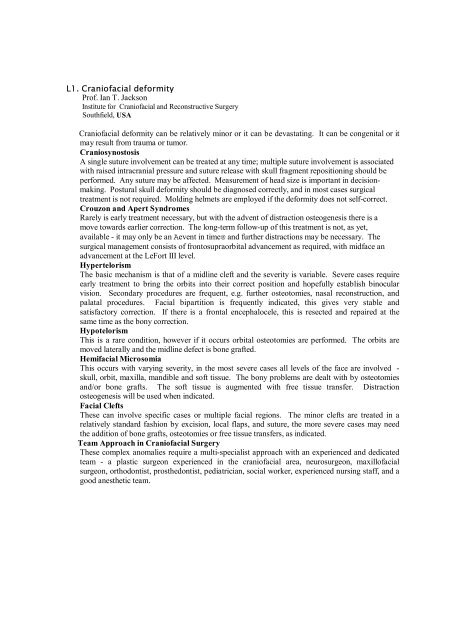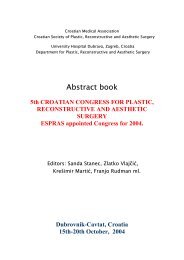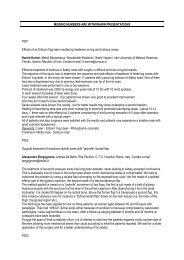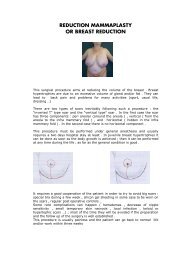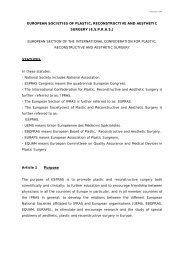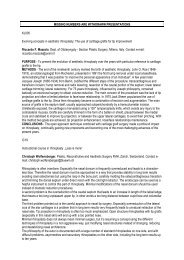Abstract book - ESPRAS
Abstract book - ESPRAS
Abstract book - ESPRAS
Create successful ePaper yourself
Turn your PDF publications into a flip-book with our unique Google optimized e-Paper software.
L1. Craniofacial deformity<br />
Prof. Ian T. Jackson<br />
Institute for Craniofacial and Reconstructive Surgery<br />
Southfield, USA<br />
Craniofacial deformity can be relatively minor or it can be devastating. It can be congenital or it<br />
may result from trauma or tumor.<br />
Craniosynostosis<br />
A single suture involvement can be treated at any time; multiple suture involvement is associated<br />
with raised intracranial pressure and suture release with skull fragment repositioning should be<br />
performed. Any suture may be affected. Measurement of head size is important in decision-<br />
making. Postural skull deformity should be diagnosed correctly, and in most cases surgical<br />
treatment is not required. Molding helmets are employed if the deformity does not self-correct.<br />
Crouzon and Apert Syndromes<br />
Rarely is early treatment necessary, but with the advent of distraction osteogenesis there is a<br />
move towards earlier correction. The long-term follow-up of this treatment is not, as yet,<br />
available - it may only be an Aevent in time@ and further distractions may be necessary. The<br />
surgical management consists of frontosupraorbital advancement as required, with midface an<br />
advancement at the LeFort III level.<br />
Hypertelorism<br />
The basic mechanism is that of a midline cleft and the severity is variable. Severe cases require<br />
early treatment to bring the orbits into their correct position and hopefully establish binocular<br />
vision. Secondary procedures are frequent, e.g. further osteotomies, nasal reconstruction, and<br />
palatal procedures. Facial bipartition is frequently indicated, this gives very stable and<br />
satisfactory correction. If there is a frontal encephalocele, this is resected and repaired at the<br />
same time as the bony correction.<br />
Hypotelorism<br />
This is a rare condition, however if it occurs orbital osteotomies are performed. The orbits are<br />
moved laterally and the midline defect is bone grafted.<br />
Hemifacial Microsomia<br />
This occurs with varying severity, in the most severe cases all levels of the face are involved -<br />
skull, orbit, maxilla, mandible and soft tissue. The bony problems are dealt with by osteotomies<br />
and/or bone grafts. The soft tissue is augmented with free tissue transfer. Distraction<br />
osteogenesis will be used when indicated.<br />
Facial Clefts<br />
These can involve specific cases or multiple facial regions. The minor clefts are treated in a<br />
relatively standard fashion by excision, local flaps, and suture, the more severe cases may need<br />
the addition of bone grafts, osteotomies or free tissue transfers, as indicated.<br />
Team Approach in Craniofacial Surgery<br />
These complex anomalies require a multi-specialist approach with an experienced and dedicated<br />
team - a plastic surgeon experienced in the craniofacial area, neurosurgeon, maxillofacial<br />
surgeon, orthodontist, prosthedontist, pediatrician, social worker, experienced nursing staff, and a<br />
good anesthetic team.


